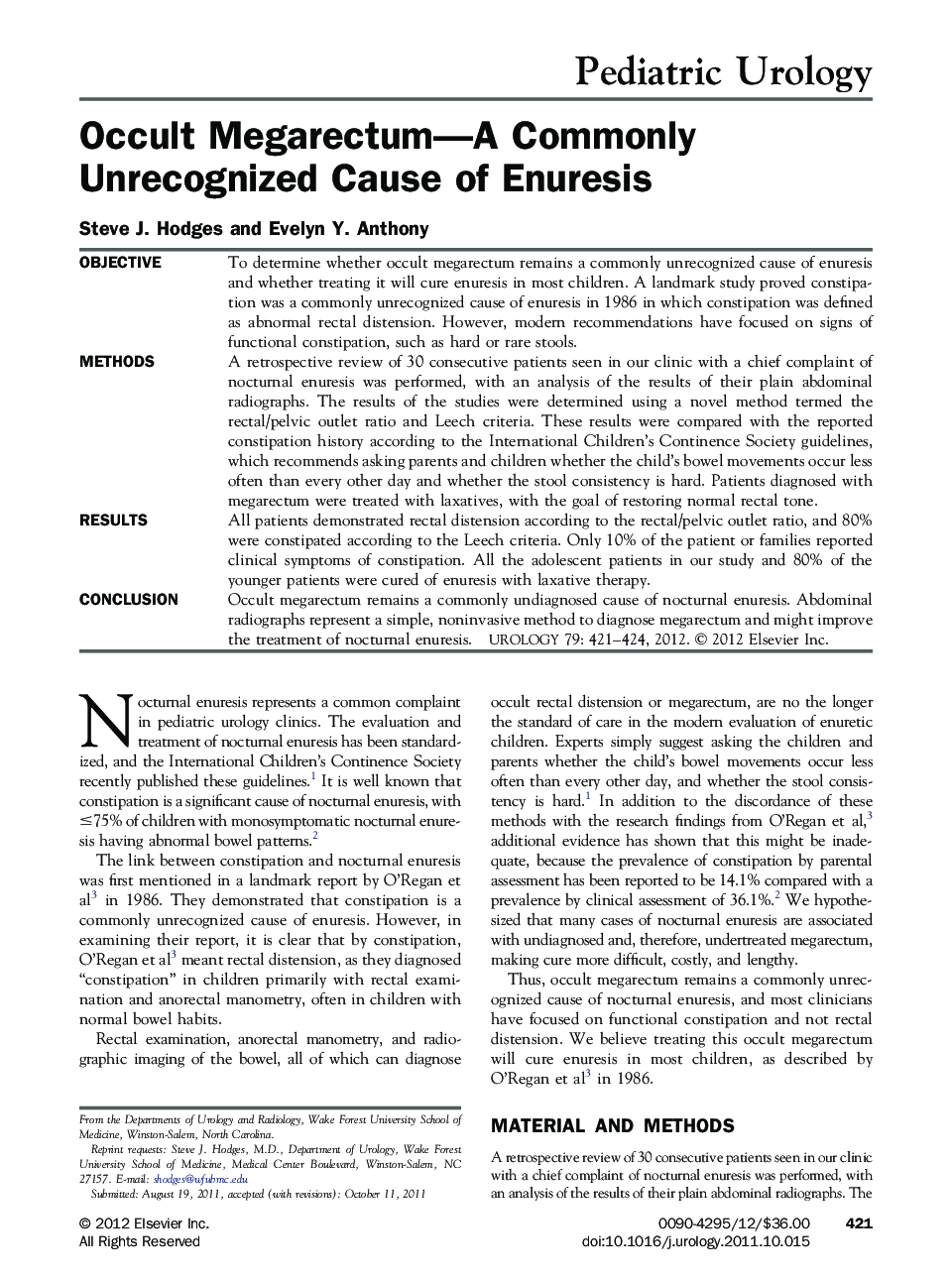| Article ID | Journal | Published Year | Pages | File Type |
|---|---|---|---|---|
| 3900494 | Urology | 2012 | 4 Pages |
ObjectiveTo determine whether occult megarectum remains a commonly unrecognized cause of enuresis and whether treating it will cure enuresis in most children. A landmark study proved constipation was a commonly unrecognized cause of enuresis in 1986 in which constipation was defined as abnormal rectal distension. However, modern recommendations have focused on signs of functional constipation, such as hard or rare stools.MethodsA retrospective review of 30 consecutive patients seen in our clinic with a chief complaint of nocturnal enuresis was performed, with an analysis of the results of their plain abdominal radiographs. The results of the studies were determined using a novel method termed the rectal/pelvic outlet ratio and Leech criteria. These results were compared with the reported constipation history according to the International Children's Continence Society guidelines, which recommends asking parents and children whether the child's bowel movements occur less often than every other day and whether the stool consistency is hard. Patients diagnosed with megarectum were treated with laxatives, with the goal of restoring normal rectal tone.ResultsAll patients demonstrated rectal distension according to the rectal/pelvic outlet ratio, and 80% were constipated according to the Leech criteria. Only 10% of the patient or families reported clinical symptoms of constipation. All the adolescent patients in our study and 80% of the younger patients were cured of enuresis with laxative therapy.ConclusionOccult megarectum remains a commonly undiagnosed cause of nocturnal enuresis. Abdominal radiographs represent a simple, noninvasive method to diagnose megarectum and might improve the treatment of nocturnal enuresis.
